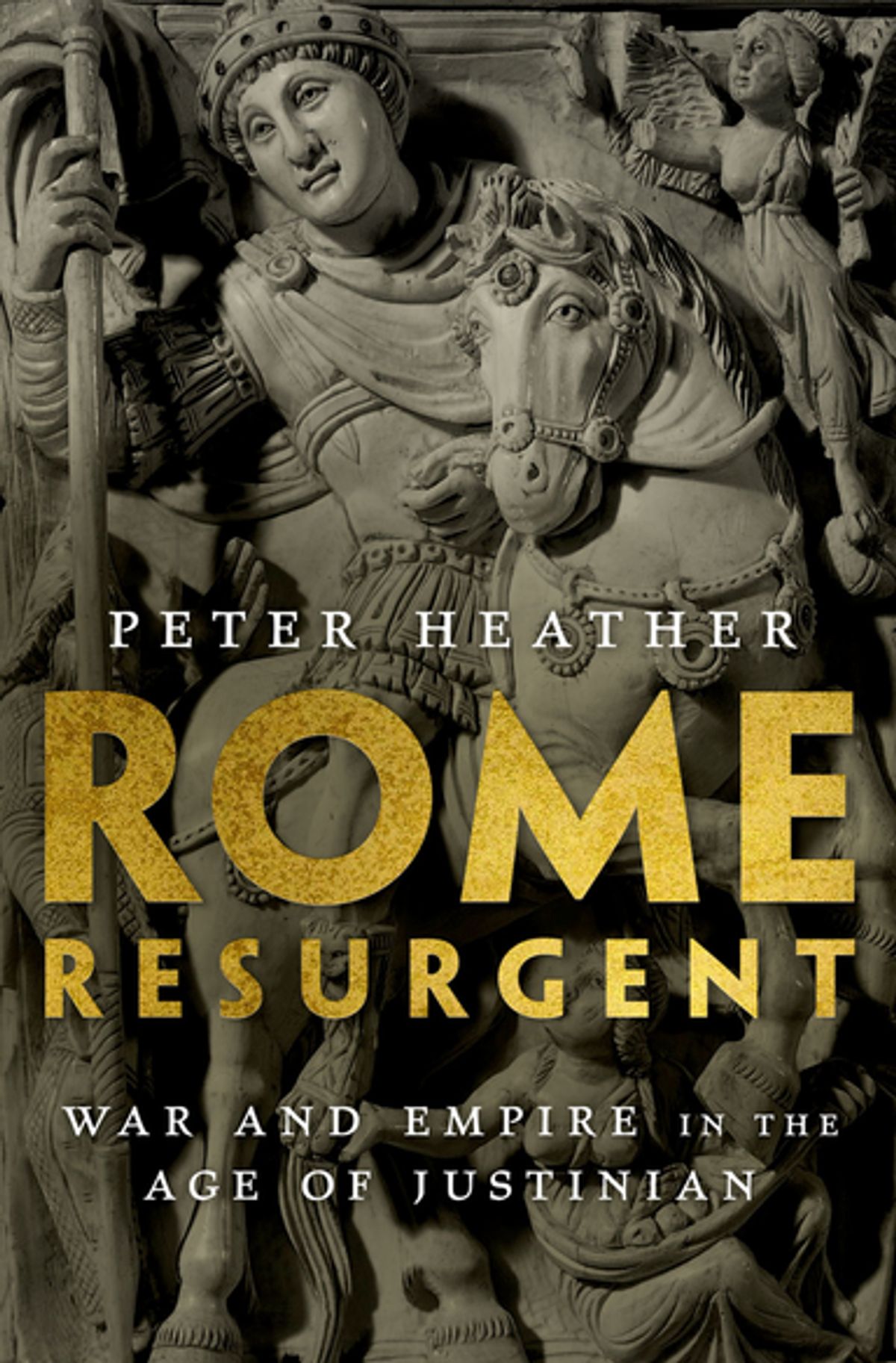Heather, Peter. Rome Resurgent: War and Empire in the Age of Justinian. Oxford: Oxford University Press, 2018.
The Roman Empire in modern memory stands as a great, pseudo-modern edifice of civilization before its decline and collapse, which would forever splinter Europe into warring factions that would not recapture the same level of prosperity until over a thousand years later. When studied with a more critical light, however, it is miraculous that Rome was able to survive as long as it did, and without its overwhelming technological superiority over (all but one of) its neighbors, this great empire might never have survived long into the first millennium. Starting in the first century BC, uprisings, civil wars, and violently contested succession were the rule of Ancient Roman politics, not the exception, and this would continue with only a few stretches of peace for approximately the next seven hundred years. In Rome Resurgent, Peter Heather attempts to recast the history of Eastern Rome in the sixth century in light of these traditions, and in so doing accomplishes one of the most eloquent and comprehensive analyses of Roman ideas of political legitimacy I’ve yet encountered.
For those unfamiliar with the history of Rome in the sixth century, it is a wild ride. While the western empire had collapsed with a whimper in AD 476, the eastern empire steamed on, governed from Constantinople by an increasingly Greek-style regime. While it retained most of its military and economic power, East Rome had also been riven by endless succession disputes, and had declined to come to the West’s aid after the 460s. Then, in the first half of the sixth century, the emperor Justinian would marshal East Rome to ascend to its greatest heights. Though his reign would be marked by riots that destroyed half of his capital and a series of disastrous wars with Persia, Justinian was still able to reconquer the western empire’s richest provinces, including the hugely symbolic cities of Carthage and Rome itself, restoring Roman dominance of the Mediterranean. Yet barely a century later, all these advances would disappear, with the new rump state of Byzantium clinging onto the new Muslim world as an unwilling satellite state, doomed to limp on until at last extinguished by the Ottomans in 1453 with their capture of Constantinople.
Past scholarship has looked at these events as part of one larger spectrum of imperial overreach and decline; if Justinian had not gone to such great lengths for glory, the empire might have withstood the onslaughts of the seventh century. Rome Resurgent can be read as Peter Heather’s emphatic denial of this interpretation of Roman history. He begins with establishing the ideological bases for Roman imperial rule: that the emperor was ordained by the reigning deity (first Jupiter, then the God of Christianity starting in the fourth century) to uphold uniquely Roman values of Classical education and written, logical law that separated their uniquely blessed civilization from the rest of barbaric humanity. This divine favor, however, was a far cry from later Early Modern concepts of monarchy; it had to be demonstrated at any opportunity, as disasters and reversals could prove that the emperor was in fact a pretender, not supported by divine authority. With no real rules for succession in the Roman world beyond “Might makes right,” this meant that any emperor seen as out of divine favor would likely be deposed by other powers interested in the purple.
Having established this ideological foundation, Heather then deftly illustrates how every one of Justinian’s decisions was fueled by this calculus of legitimacy. His decision to reform Roman law was the best way to demonstrate favor domestically, and deliberately picking a fight with Persia, if successful, would have cemented his position on the throne. Instead, Persia soundly defeated Roman forces and Justinian’s capital erupted in violence, nearly overthrowing him. Then, in conditions that could only be described as cautious and contingent, the general Belisarius stumbled into recapturing all of North Africa for Rome, reversing Justinian’s fortunes and providing the regime with much needed legitimacy. Now secure, Justinian could continue his path of reconquest into Italy. Whatever the costs of these moves (and Heather is clear they were at the very least disastrous on a personal level for local populations), they were they only decisions Justinian could have made if he wanted to keep his throne—and his life.
Rome Resurgent’s denouement at last provides Heather’s direct answer to the question of East Roman overreach, and it is so logically overwhelming that it is almost too comprehensive. If his presentation of the facts are correct, it is hard to imagine any respectable scholar blaming Justinian for eventual East Roman collapse when that collapse came a century later and after another hugely destructive war initiated by Justinian’s successors (questing for legitimacy again), when he himself had left the empire at peace on all fronts. I can’t help but suspect that Heather’s strength as a writer might obscure or omit key details that make other historiographical trends, if not correct, at least less obviously wrong. This remains only a suspicion, however, and his argument is persuasive in any case.
Ironically, in Rome Resurgent I have found a key text explaining the chronic instability of the Roman state and another pillar of its endless need for conquest. I cannot recommend it highly enough for students of the ancient or medieval worlds, and even those with passing interest in a period often neglected in popular memory will find much to appreciate within its pages.
